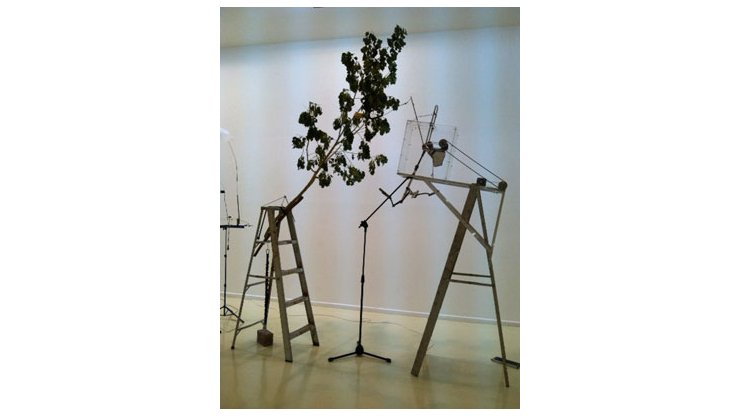These events, which simulate natural phenomena, are activated within the museum space by means of sculpted machines. Machines and nature operate according to the same physical and mechanical principles. However, the chain reaction in this work changes, thus exposing the arbitrariness of the machine as oppose to the order that exists in nature. It does not translate into a concrete form of action, and remains a mere suggestion or option, perhaps alluding to an impending disaster.
The materials that make up this work – everyday objects, machine parts, engines, straps, metal wires, and poles – are transformed into the components of an independent system that functions as a sort of drawing in space, or as a mechanical model of a natural phenomenon. The action enchained in this work takes place for the most part in the space above the viewer’s head, so that he is required to look upwards. This upward gaze is directed at the realm of the unattainable, of dreams and aspirations – a wondrous world detached from the familiar force of gravity that anchors us to the ground. This work is related to the kinetic sculptural legacy of Duchamp, Calder, and Tinguely, as well as to the contemporary artistic duo Peter Fischli and David Weiss’s work The Way Things Go.
The work was produced with the assistance of Gil Lavi

Less Reading...
